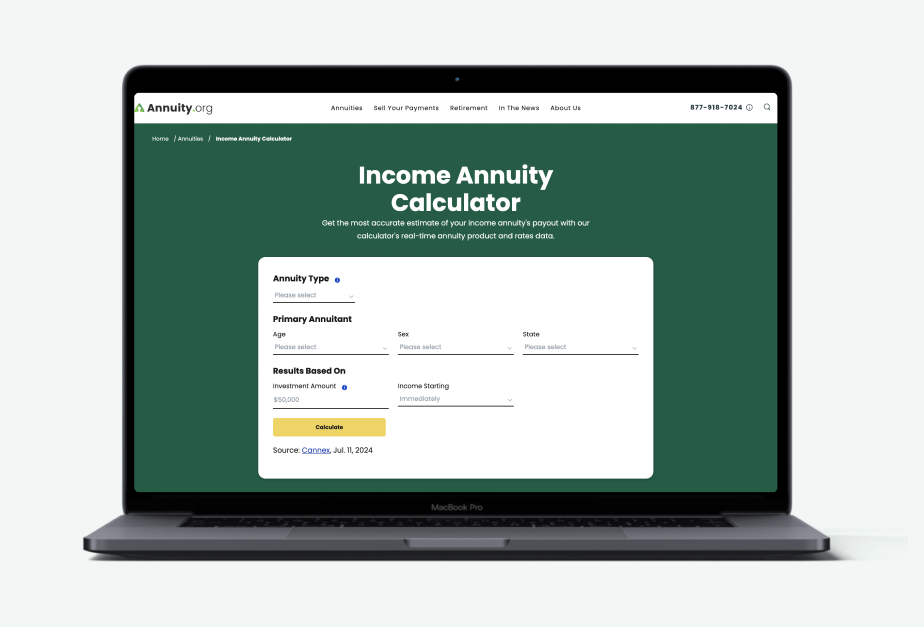What Is a Renewal Rate?
The renewal rate is the interest rate the insurance company sets at the end of an annuity’s contract term. This rate can be lower than short-term interest rates, depending upon the performance of the funds in the insurer’s portfolio.
Key Facts About Renewal Rates and Bailout Provisions
- A renewal rate is the new rate your annuity will earn after an initial period.
- Bailout provisions allow you to surrender your annuity without incurring penalties.
- Before surrendering your annuity, explore alternative options, understand potential tax implications and consider a tax-efficient strategy such as a 1035 exchange for reinvesting your money.
For example, if you purchase a fixed annuity when interest rates are high, the guaranteed interest rate the insurer offers will reflect the current interest rate environment. Because annuities are long-term investments, the insurer will reinvest any earnings from the contract. If rates fall over the course of the contract term, the insurance company will set a new, lower rate based on the assets it currently owns.
How Do Renewal Rates Work?
When a fixed annuity is issued, the fixed rate is in force for a specified period. After this initial period, the interest rate may be reset to a different rate called the renewal rate.
If this renewal rate or rate cap falls below a predetermined market interest rate, bailout provisions, or bailout clauses, would allow annuity owners to surrender it without penalty if they choose to do so. Not every fixed annuity contract contains a bailout provision, but those that do offer annuity buyers more options.
“Annuities are not usually known for their flexibility,” explained Stephen Kates, CFP® Principal Financial Analyst for Annuity.org. “However, exploring options or riders [like bailout provisions] that allow you to pivot when you need to can pay off over a multi-decade retirement plan.”
How soon are you retiring?
What is your goal for purchasing an annuity?
Select all that apply
What Is a Bailout Provision?
As mentioned above, a bailout provision is an annuity contract provision that allows the annuity owner to surrender the annuity contract without incurring the typical surrender charges when certain conditions are met. Typically, bailout provisions allow the annuity owner to pull their money if rate caps or renewal rates on a fixed annuity fall below a specified level.
If economic conditions force the insurer to reduce your renewal rate to a level that triggers the bailout provision, you will have the option of surrendering your contract.
The Importance of Renewal Rates and Bailout Provisions
Bailout provisions offer you the chance to protect yourself against interest rate fluctuations. Since annuities are part of your long-term financial plans, bailout rates can be an invaluable way to gain added flexibility and ensure you are earning the returns you need to build a secure future.
As with any contract, you need to understand your annuity contract’s terms and conditions. Since annuities are part of your financial plan, you also need to understand how various factors could affect you in the future.
It’s best to have a plan in place before it’s time to act. When you initially purchase your annuity, it may help to project the effects of various renewal rates on your plan. That way, you’ll already know what you will do if your renewal rate is ever lower than what would be acceptable.
How To Take Advantage of a Bailout Provision
If you decide to surrender your annuity, you will need to consider how you will reinvest your money and adjust your retirement plan.
Talk to your financial advisor about other types of annuities or alternative financial vehicles before you complete a bailout request form. Your advisor will inform you of any tax implications that may exist and suggest strategies for limiting your tax exposure. For example, the Internal Revenue Code states that “no gain or loss shall be recognized on the exchange of an annuity contract for another annuity contract.” This is known as a 1035 exchange because it is governed by Section 1035(a)(3) of the IRC.
If the annuity contract was originally funded from qualified retirement dollars, the annuity can be surrendered back to an IRA without tax implications. Additionally, annuities can be 1035 exchanged into long-term care policies.

Overwhelmed by Safe Retirement Options?
Frequently Asked Questions About Renewal Rates and Bailout Provisions
Yes, your renewal rate can be lower than your initial rate.
The bailout provision allows you to surrender your annuity in certain situations, but that doesn’t mean you should. Consider your alternatives and whether or not the annuity still provides the benefits you need.




